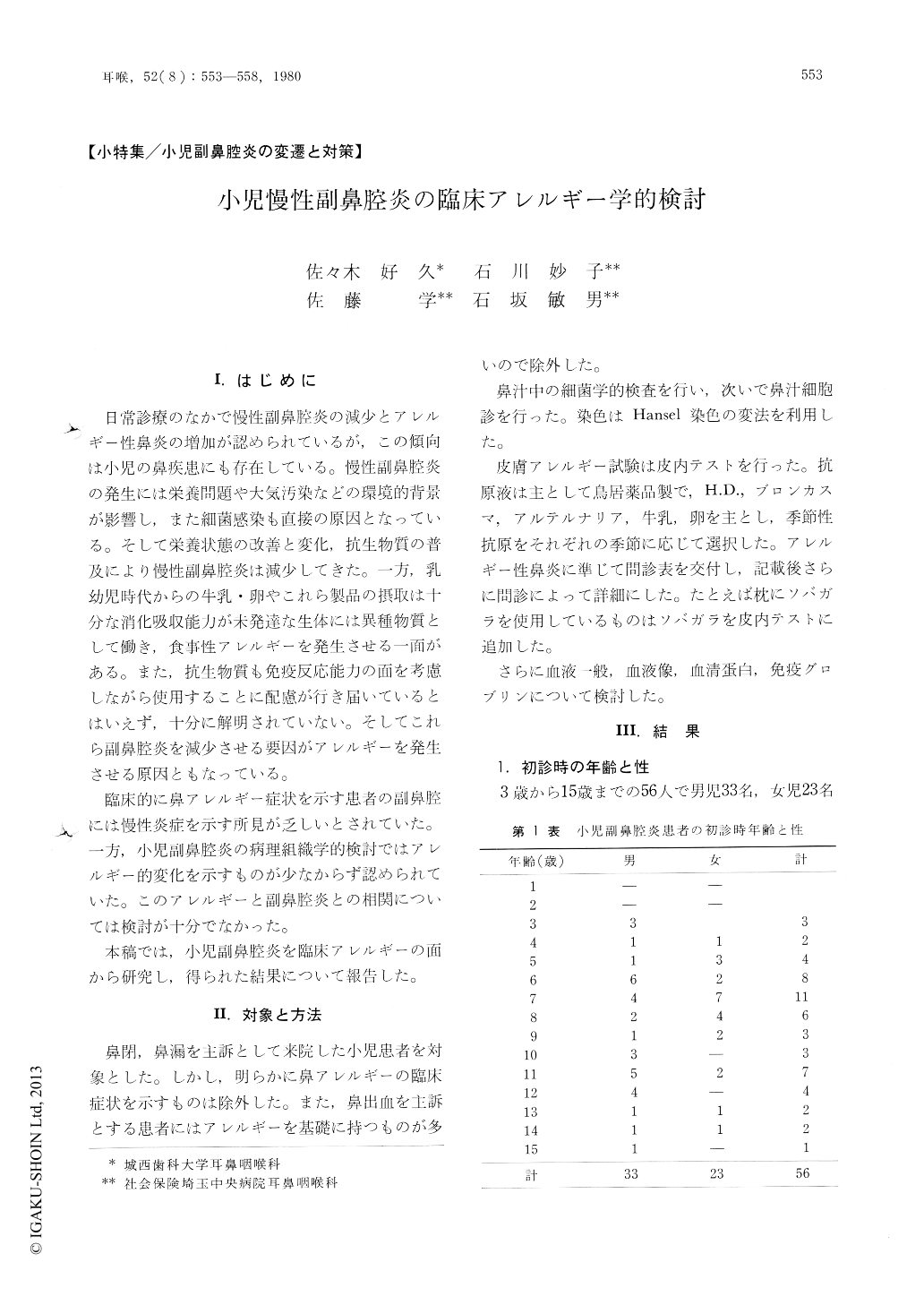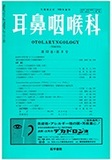Japanese
English
- 有料閲覧
- Abstract 文献概要
- 1ページ目 Look Inside
I.はじめに
日常診療のなかで慢性副鼻腔炎の減少とアレルギー性鼻炎の増加が認められているが,この傾向は小児の鼻疾患にも存在している。慢性副鼻腔炎の発生には栄養問題や大気汚染などの環境的背景が影響し,また細菌感染も直接の原因となっている。そして栄養状態の改善と変化,抗生物質の普及により慢性副鼻腔炎は減少してきた。一方,乳幼児時代からの牛乳・卵やこれら製品の摂取は十分な消化吸収能力が未発達な生体には異種物質として働き,食事性アレルギーを発生させる一面がある。また,抗生物質も免疫反応能力の面を考慮しながら使用することに配慮が行き届いているとはいえず,十分に解明されていない。そしてこれら副鼻腔炎を減少させる要因がアレルギーを発生させる原因ともなっている。
臨床的に鼻アレルギー症状を示す患者の副鼻腔には慢性炎症を示す所見が乏しいとされていた。一方,小児副鼻腔炎の病理組織学的検討ではアレルギー的変化を示すものが少なからず認められていた。このアレルギーと副鼻腔炎との相関については検討が十分でなかった。
The allergic studies were done on 56 children with chronic sinusitis who scarcely had such allergic symptoms as sneezing and watery nasal discharge. Eosinophil in blood increased in 50 per cent of the patients. The nasal secretion showed remarkable increase of mast cells in 58 per cent of the patients and a remarkable increase of eosinophil in 47 per cent of the patients.
Allergic skin tests revealed a positive reaction to house dust in 25 patients among 56, a positive reaction to broncastma berna 16 patients, and among them 14 patients had an immediate reaction and 4 patients delayed reaction. Two patients were positive to alternaria, 2 to buckwheat husks, 1 to ragweed.
Both eosinphil and mast cells did not appear in the nasal secretion of only one patient out of 28 with the positive skin reaction to house dust.

Copyright © 1980, Igaku-Shoin Ltd. All rights reserved.


